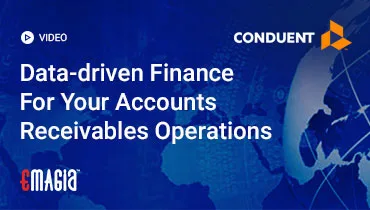If you’ve ever felt overwhelmed by the jargon of debits, credits, and ledgers, you’re not alone. At the heart of every financial record, every spreadsheet, and every company’s balance sheet lies a deceptively simple yet fundamental concept: the journal entry. This isn’t just about making an entry in journal; it’s about translating the messy reality of business into the universal language of finance. From a small business owner recording their first sale to a seasoned accountant preparing complex financial statements, understanding the journal entry is the key to unlocking the entire world of accounting. In this comprehensive guide, we’ll strip away the complexity and build your knowledge from the ground up, ensuring you master the art of recording every transaction with confidence and accuracy.
What Is a Journal Entry in Accounting? The Foundational Building Block
Think of a journal entry as the very first draft of a financial story. Before a transaction makes it to a polished financial statement, it must first be meticulously written down in a book of original entry, known as the general journal. This initial recording of accounting transactions journal entries is the bedrock of the double-entry bookkeeping system. It’s the chronological log of every business event that has a monetary impact, ensuring that for every debit, there is an equal and opposite credit. This simple yet profound principle is what keeps the entire accounting equation—Assets = Liabilities + Equity—in perfect harmony.
The Essential Components of a Journal Entry
To prepare a journal entry correctly, you need to understand its key parts. A complete accounting journal entry on paper or in a digital system isn’t just a number; it’s a structured piece of data that tells a full story. There are four essential parts of a journal entry that you must include to ensure accuracy and clarity.
Date of the Transaction
The date is crucial because all entries must be recorded chronologically. This provides an easy-to-follow audit trail and ensures that financial reports reflect the correct time period. Whether you’re doing bookkeeping entries daily or weekly, the date stamp is non-negotiable.
The Debited Account and Amount
The account that is debited is always listed first. This is a fundamental formatting rule for general journal entry forms. The debit amount is always placed in the debit column. In the world of accounting entries, a debit increases assets and expenses, while decreasing liabilities, equity, and revenue.
The Credited Account and Amount
The account that is credited is always listed on the next line and is indented to the right. The credit amount goes in the credit column. A credit, conversely, increases liabilities, equity, and revenue, and decreases assets and expenses. Remember, the total debits must always equal the total credits for the transaction to be in balance.
A Concise Description
The description, or narration, is a short explanation of the transaction. This is invaluable for anyone reviewing the books later, including auditors. It explains the “why” behind the numbers. For example, a description might read, “To record the purchase of office supplies for cash.”
The Simple Process of How to Do a Journal Entry
Don’t be intimidated. The process of how to do a journal entry can be broken down into a few simple steps. By following this method, you can ensure every transaction is recorded correctly and efficiently.
Step 1: Identify the Transaction and Source Document
Every transaction starts with a source document. This could be a sales invoice, a receipt, a purchase order, or a bank statement. The document provides evidence of the transaction and contains all the necessary details. This is the first step in recording transactions in a journal.
Step 2: Analyze the Transaction and Identify Affected Accounts
This is where you determine which accounts are impacted. For example, if you pay for rent with cash, the two accounts affected are “Rent Expense” and “Cash.” You need to understand your chart of accounts to do this accurately.
Step 3: Determine the Debit and Credit Impact
Using the golden rules of accounting, you decide which account to debit and which to credit. Since Rent Expense is an expense account, an increase is a debit. Since Cash is an asset account and you are paying, the decrease is a credit. This is the core of how do you do a journal entry.
Step 4: Record the Transaction
Finally, you write the entry. The debited account (Rent Expense) goes on the first line with the amount in the debit column. The credited account (Cash) goes on the second, indented line with the amount in the credit column. You then add the date and a description. This is how to write a journal entry accounting.
Types of Journal Entries Accounting Professionals Use
While the basic structure remains the same, there are different types of accounting journal entries used for specific purposes in the accounting cycle.
Simple and Compound Entries
A simple entry, as shown in the example above, affects just two accounts: one debit and one credit. A compound entry involves more than two accounts. For instance, if you pay an employee, you would debit Wages Expense and credit Cash and Taxes Payable. This type of entry accounting is essential for more complex transactions.
Adjusting Entries
These entries are made at the end of an accounting period to record revenues or expenses that have been incurred but not yet recorded. Examples include recognizing depreciation on an asset or accruing wages that have been earned but not yet paid. These are a crucial part of preparing journal entries for accurate financial statements.
Reversing Entries
Made at the beginning of a new accounting period, reversing entries are the exact opposite of a previous adjusting entry. They simplify the recording of subsequent transactions. For example, reversing an accrued wage entry makes it easier to record the actual payroll expense when it’s paid.
From Journal to Ledger: The Posting Process
After a transaction is recorded in the journal, it must be “posted” to the general ledger. The general ledger is a collection of all the accounts a business uses, with a T-account for each one. Posting is simply the process of transferring the debits and credits from the journal entry to the corresponding T-accounts in the ledger. This step is what allows an accountant to see the running balance of any single account at any given time. Without this step, the journal would just be a list of transactions, and you wouldn’t be able to calculate a balance for cash, accounts payable, or any other account.
Emagia: Automating and Streamlining Your Accounting Workflow
In today’s fast-paced business environment, the traditional method of accounting journal entry on paper is no longer viable for most growing companies. The sheer volume of transactions can quickly become overwhelming, leading to errors, delays, and a lack of real-time visibility. This is where advanced financial technology steps in to revolutionize the process.
Emagia offers a powerful platform that automates and optimizes key aspects of financial operations, including accounts receivable and cash application. By leveraging AI and machine learning, Emagia can automatically categorize transactions, match payments to invoices, and even suggest the correct journal entry for a transaction. This not only reduces the risk of manual errors but also frees up your team from tedious, repetitive tasks.
For transactions that require human intervention, the system provides a clear, documented workflow for review and approval, ensuring every financial accounting journal entries are accurate and compliant. Emagia transforms the raw data of your business into actionable insights, helping you to speed up cash collection, improve your cash flow, and ensure that your financial records are always up-to-date and reliable. It’s a modern solution that complements and enhances your fundamental understanding of accounting principles, allowing you to focus on strategy rather than data entry.
FAQs
What are journal entries in accounting?
Journal entries are the initial chronological records of a business’s financial transactions. They are the first step in the accounting cycle, detailing the accounts affected, the amounts to be debited and credited, and a brief description of the transaction.
How do you make a journal entry?
To make a journal entry, you must first identify the transaction, determine the accounts involved, and then apply the rules of debit and credit. You record the date, the debited account first, followed by the credited account (indented), and then write a short explanation of the transaction.
What is a general journal entry in accounting?
A general journal entry is any financial transaction that is recorded in the general journal, which serves as the book of original entry. It’s the standard format for recording any type of business event that impacts the company’s finances.
What are the four parts of a journal entry?
The four parts of a journal entry are: the date of the transaction, the account to be debited, the account to be credited, and a description or narration of the transaction.
Why are journal entries important?
Journal entries are vital because they provide a chronological, detailed, and verifiable record of every financial event. They are the foundation upon which all other financial statements, like the income statement and balance sheet, are built.



